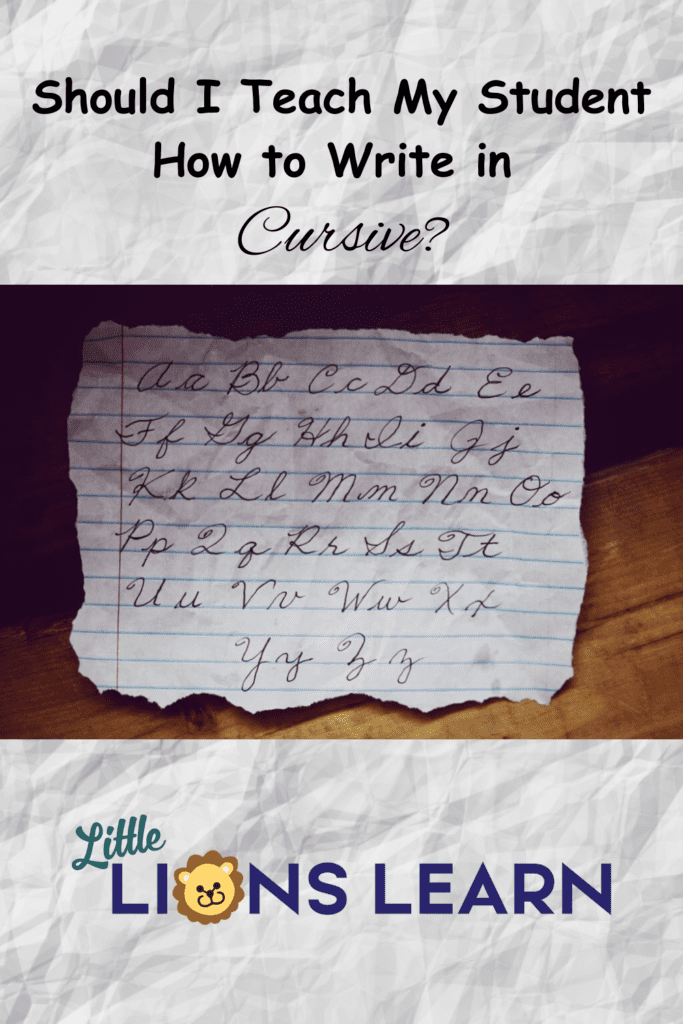Is Cursive Still a Beneficial Skill or Should I scrap it?
Should I teach my student how to write in cursive? In a rapidly evolving digital age, the debate over teaching cursive writing in homeschooling has intensified. With keyboards, touchscreens, and voice recognition becoming prevalent, many question the relevance and necessity of this elegant script. However, cursive writing holds a unique place in education, promoting fine motor skills, cognitive development, and historical appreciation. In this blog, we’ll delve into the pros and cons of teaching cursive writing in homeschooling, helping you make an informed decision for your child’s education.
The Benefits of Teaching Cursive Writing:
- Fine Motor Skills Development: One of the most significant advantages of teaching cursive writing is the positive impact it has on fine motor skills. When children learn to write in cursive, they are required to use precise hand and finger movements, enhancing dexterity and coordination. These skills can extend beyond penmanship and contribute to improved performance in various activities, such as drawing, playing musical instruments, and even sports.
- Cognitive Benefits: Cursive writing involves unique neural pathways that can stimulate brain development. Studies have shown that the act of connecting letters in cursive enhances neural connectivity, memory retention, and overall cognitive function. Additionally, learning cursive requires more concentration and focus, leading to improved attention span and mental discipline in children.
- Historical and Cultural Appreciation: By teaching cursive writing, homeschooling parents can expose their children to historical texts and primary documents in their original form. Many historical documents, manuscripts, and even personal letters from notable figures are written in cursive. Learning this skill can instill a sense of historical appreciation and a connection to the past.
- Personal Significance: Cursive writing adds a personal touch to communication. When children learn to write in cursive, they can develop their unique signatures and create more personalized letters and notes. Such individuality can boost self-esteem and confidence, making cursive a valuable skill in today’s digital world.
The Case Against Teaching Cursive Writing:
- Shifting Priorities: In an era where technology dominates communication, some argue that time spent teaching cursive could be better utilized on more relevant skills, such as typing and digital literacy. While cursive has its merits, the practicality of using it regularly is diminishing.
- Time Constraints: Modern homeschooling curricula already have numerous subjects and skills to cover, leaving limited time for supplementary activities like cursive writing. Educators might find it challenging to balance the core essentials with optional skills.
- Legibility Concerns: Cursive handwriting can be challenging to read, especially if not taught properly or if a child’s handwriting is messy. Illegible handwriting might hinder effective communication and could be a drawback when clarity is essential.
Conclusion
The decision to teach cursive writing in homeschooling ultimately depends on your child’s specific needs and your educational goals. While cursive writing offers numerous benefits, including fine motor skill development and historical appreciation, the practicality of its everyday use has diminished in the digital age. Consider your child’s interests, learning style, and long-term objectives when making this choice.
If you do decide to teach cursive writing, balance it with other essential skills, and ensure the curriculum aligns with your child’s abilities and interests. Alternatively, if time constraints or other priorities take precedence, focus on instilling digital literacy and other essential life skills that will prepare your child for the future while cherishing the art of cursive writing in its historical context.
Read more about this Great Cursive Writing Debate from the NEA
Looking for free cursive worksheets? Visit K5 Learning

